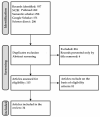Experiences and Perspectives of GC-MS Application for the Search of Low Molecular Weight Discriminants of Schizophrenia
- PMID: 36615518
- PMCID: PMC9822242
- DOI: 10.3390/molecules28010324
Experiences and Perspectives of GC-MS Application for the Search of Low Molecular Weight Discriminants of Schizophrenia
Abstract
Schizophrenia is one of the most severe chronic mental disorders that is currently diagnosed and categorized through subjective clinical assessment of complex symptoms. At present, there is a recognized need for an objective, unbiased clinical test for schizophrenia diagnosis at an early stage and categorization of the disease. This can be achieved by assaying low-molecular-weight biomarkers of the disease. Here we give an overview of previously conducted research on the discovery of biomarkers of schizophrenia and focus on the studies implemented with the use of GC-MS and the least invasiveness of biological samples acquisition. The presented data demonstrate that GC-MS is a powerful instrumental platform for investigating dysregulated biochemical pathways implicated in schizophrenia pathogenesis. With this platform, different research groups suggested a number of low molecular weight biomarkers of schizophrenia. However, we recognize an inconsistency between the biomarkers or biomarkers patterns revealed by different groups even in the same matrix. Moreover, despite the importance of the problem, the number of relevant studies is limited. The intensification of the research, as well as the harmonization of the analytical procedures to overcome the observed inconsistencies, can be indicated as future directions in the schizophrenia bio-markers quest.
Keywords: GC-MS; biomarkers; psychiatric disorders; schizophrenia; schizophrenia diagnosis.
Conflict of interest statement
The authors declare no conflict of interest.
Figures
Similar articles
-
GC-MS based metabolomics identification of possible novel biomarkers for schizophrenia in peripheral blood mononuclear cells.Mol Biosyst. 2014 Jul 29;10(9):2398-406. doi: 10.1039/c4mb00157e. Mol Biosyst. 2014. PMID: 24975926
-
Comparison of GC-MS and GC×GC-MS in the analysis of human serum samples for biomarker discovery.J Proteome Res. 2015 Apr 3;14(4):1810-7. doi: 10.1021/pr5011923. Epub 2015 Mar 16. J Proteome Res. 2015. PMID: 25735966 Free PMC article.
-
Metabolic profiling of potential lung cancer biomarkers using bronchoalveolar lavage fluid and the integrated direct infusion/ gas chromatography mass spectrometry platform.J Proteomics. 2016 Aug 11;145:197-206. doi: 10.1016/j.jprot.2016.05.030. Epub 2016 May 30. J Proteomics. 2016. PMID: 27255828
-
An Overview on the Search for Schizophrenia Biomarkers.CNS Neurol Disord Drug Targets. 2015;14(8):996-1000. doi: 10.2174/1871527314666150909114957. CNS Neurol Disord Drug Targets. 2015. PMID: 26350336 Review.
-
A scoping review of protein biomarkers for schizophrenia: State of progress, underlying biology, and methodological considerations.Neurosci Biobehav Rev. 2025 Jan;168:105949. doi: 10.1016/j.neubiorev.2024.105949. Epub 2024 Nov 21. Neurosci Biobehav Rev. 2025. PMID: 39577820
References
-
- WHO Schizophrenia Key Facts. 2022. [(accessed on 18 January 2022)]. Available online: https://www.who.int/news-room/fact-sheets/detail/schizophrenia.
Publication types
MeSH terms
Substances
LinkOut - more resources
Full Text Sources
Medical
Miscellaneous


